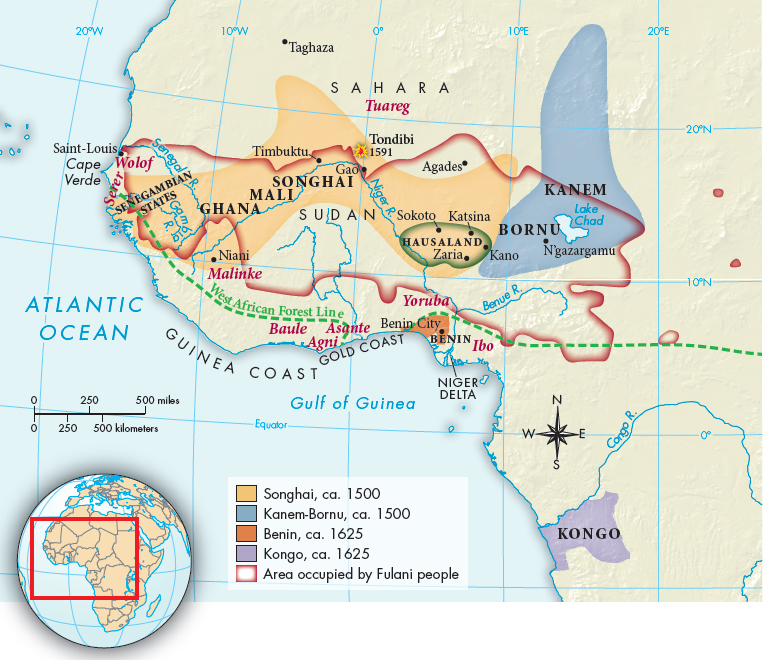A History of World Societies:
Printed Page 588
A History of World Societies Value
Edition: Printed Page 591
Chapter Chronology
What types of economic, social, and political structures were found in the kingdoms and states along the west coast and in the Sudan?
In mid-fifteenth-century Africa, Benin and a number of other kingdoms flourished along the two-thousand-mile west coast between Senegambia and the northeastern shore of the Gulf of Guinea. Because much of that coastal region is covered by tropical rain forest, in contrast to the western Sudan (immediately south of the Sahara), it is called the West African Forest Region (Map 20.1). Further inland, in the region of the Sudan, the kingdoms of Songhai, Kanem-Bornu, and Hausaland benefited from the trans-Saharan caravan trade, which along with goods brought Islamic culture to the region. These West African kingdoms maintained their separate existences for centuries. Stateless societies such as those in the region of Senegambia (modern-day Senegal and the Gambia) existed alongside these more centralized states. Despite their political differences and whether they were agricultural, pastoral, or a mixture of both, West African cultures all faced the challenges presented by famine, disease, and the slave trade.
